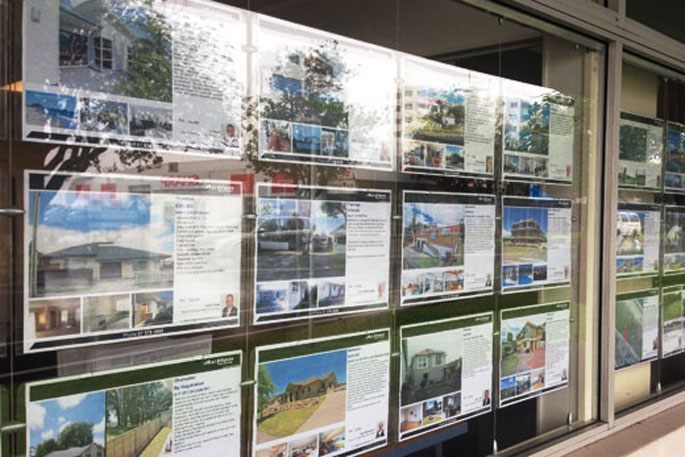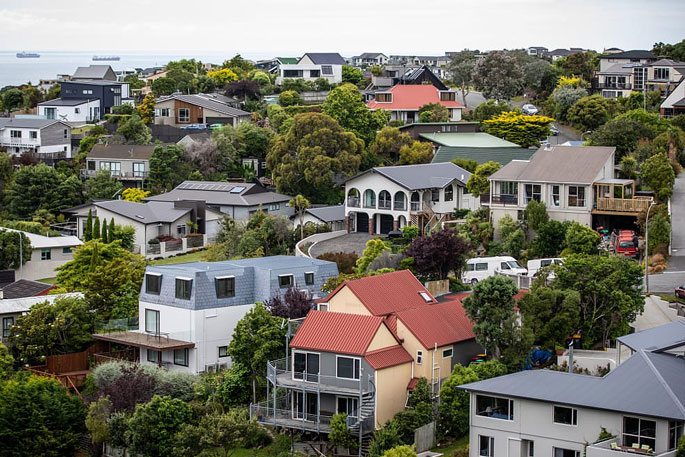When Mary Hiron decided to move out of Hamilton for her retirement, she could comfortably buy a house in South Waikato, but says she would struggle to do so now.
House prices in South Waikato have climbed steeply over the last 10 years.
New CoreLogic figures show the district's average price increased by 249 per cent, from $135,450 in September 2012 to $472,654 this September.
It is the second-highest rate of price growth in the country over that period of time.
Former Leader of the Opposition, Leader of the New Zealand National Party and Governor of the Reserve Bank of New Zealand Don Brash recently sat down with BuzzWorthy to talk about the housing situation in New Zealand.
Listen to the podcast in full here.
Hiron and a friend paid $300,000 for a house they bought together in Putaruru six years ago, and since then the value had gone up considerably.
Six months ago, it had a value of $700,000, although that has dropped back to around $500,000, she says. CoreLogic puts the town's current median price at $541,100.
"Those prices would have made buying a home a problem for me, and they make it difficult for locals looking to buy now.
'Prices are still less expensive than in many other areas, so at the height of the recent boom, there were a lot of people from out of town coming in to buy.”
 House prices have increased drastically over the last few years.
House prices have increased drastically over the last few years.
But there was a limited supply of houses on the market, and when some of Hiron's friends wanted to buy in the town a year ago, there was nothing for them to look at.
'Although that situation seems to have tailed off now, I understand that rentals are hard to come by, and that has an impact on locals too.”
Some housing development is going on, and another retirement village is being planned, she says.
'More supply may help with the cost of housing, and lead to the much-needed improvement of local shops.”
Putaruru is not the only town in the district to feel the impact of the rise in prices.
Tokoroa has a lower median price, with CoreLogic putting it at $446,000.
But over the last 24 months it has had the highest average price increase in the Waikato region, Shon Meszaros from Property Brokers Tokoroa says.
Following the global financial crisis, the town's market was a bit sluggish, but prices were moving up, and then they jumped again over the 2020 to 2021 boom, he says.
That was driven by three buyer groups - investors, retirees, and first home buyers - who were attracted by Tokoroa's prices, which are more affordable than those of Auckland, Hamilton or Tauranga.
'Retirees can cash up a $1 million house in Auckland, and buy a good house here for $400,000, and have funds left over, while first-home buyers that can't get into the market in one of the bigger cities can here.”
While the town used to have a reputation for being a bit rough, that has changed, Meszaros says.

There are employment opportunities in engineering and farming, high demand for skilled tradies, and a new milk processing factory and trade trainee centre are being built.
'It has made people more enthusiastic about moving here, and there has been a big change with a lot of new families arriving, which is positive.
'But it has made the market harder for some locals. A paradigm shift in thinking has been necessary, because it used to be very cheap, and it isn't as cheap any more.
'That is great for sellers, and many have made handsome gains, but it is difficult for first time buyers, especially as there hasn't been much building since the 1980s, and there is a shortage of two-bedroom unit type properties.”
Rental supply is very tight, and rents have gone up, although not by too much, he says.
South Waikato's 10-year price increase may be huge, but it is not the biggest in the country.
Kawerau in the Bay of Plenty took out the number one spot, with a 260 per cent rise, according to CoreLogic's figures.
The small provincial town's average price increased from $118,293 in September 2012 to $425,633 this September.
Prices were hit hard in the GFC, but from 2014 onwards they climbed steadily, although the pace picked up during the recent boom.
Property Brokers Whakatane branch manager Kathryn McKay says the vast majority of buyers have been from out of town.
They are made up of investors, first home buyers, and retirees from Auckland and Tauranga.
'General sentiment about Kawerau has been improving over the years with many more people considering it as a place to retire.”
There are some big employers, including Asaleo Care, Oji, Carter Holt, Mercury Geothermal, and Sequal timber mill, and there is continued industrial development, she says.
'The positive publicity the town has received regarding its industrial growth has been a large reason we have had the influx of out of town buyers. They see the town as one full of future potential.”
But the rise in prices does impact on people who already live in Kawerau, and her agents have not seen much movement from locals upgrading or moving to a different house, McKay says.
'There is huge demand for rental properties, but the supply is just not there, and this has resulted in increased rent prices too.”
Horowhenua in Manawatū-Whanganui had the country's third-biggest 10-year price increase, CoreLogic's figures show.
The district's average price went up by 213 per cent, from $194,541 in September 2012 to $607,983 this September.
Roz Wallace, from Ray White Levin, has been working in the area for 15 years, and says there has been a tremendous rise in prices over that time.
The opening of the Kāpiti Expressway and, more recently, Transmission Gully have played a role in that, as they have opened up the drive to Wellington and made commuting easier, she says.
'But it is important to note that there was a sharp increase in prices following the first Covid lockdown, and they have then declined sharply this year since last year's peak in October.”
First-home buyers coming into the area are a strong presence in the market, although their numbers have dropped off a bit, she says.
'There is still great value for money in Levin. The difference between what you can get for $600,000 here compared to Wellington is significant, and listings have quadrupled since last year, so buyers have more choice.”
Rising prices have made it harder for the locals, but rental supply has eased recently and there are more houses for rent, which is good for tenants, Wallace says.
'There is also more building going on, with the council putting some measures in place to free up more land for development, including for affordable housing.”
Rangitikei in Manawatū-Whanganui and South Wairarapa in the Wellington region rounded out CoreLogic's list of the five areas with the highest 10-year price increases.
The average price in Rangitikei rose 208 per cent from $151,604 in September 2012 to $466,832 this September, while in South Wairarapa it was up 205 per cent from $282,938 to $862,834.
In contrast, the average national price increased by 136 per cent over the years between 2012 and 2022, from $414,008 to $977,158.
CoreLogic chief property economist Kelvin Davidson says the 10-year period masked a number of cycles that had occurred, but the areas with the biggest increases all had much cheaper prices to start with.
Those more affordable prices and lower base rate meant their prices had more natural headroom to grow than in places such as Auckland where prices started higher, he says.
'But they are all small, more provincial areas, with lower populations, and fewer economic drivers than the main urban centres have. So while their upswing in prices was big, they are potentially more vulnerable to the downswing too.”



0 comments
Leave a Comment
You must be logged in to make a comment.